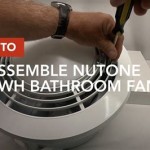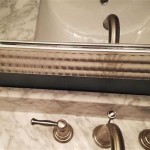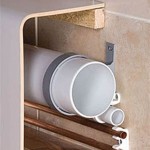Tiny Jumping Bugs in the Bathroom: Identification and Management
The presence of small, jumping insects in a bathroom can be a source of considerable consternation and hygiene concerns. These tiny arthropods, often barely visible to the naked eye, can quickly multiply in the damp and humid environment that bathrooms frequently provide. Accurate identification of the species is crucial for effective management and prevention of future infestations. This article will explore the common types of tiny jumping bugs found in bathrooms, their preferred habitats, the potential risks they pose, and strategies for their control and eradication.
Several species of insects and other arthropods may be responsible for the leaping movement observed in a bathroom setting. These creatures are attracted to the moisture, organic matter, and often the darkness that these rooms offer. Understanding their specific characteristics and behaviors allows for the implementation of targeted control measures.
Common Culprits: Springtails
Springtails, belonging to the order Collembola, are frequently the primary cause of infestations involving tiny jumping bugs in bathrooms. These minute creatures, typically measuring between 1 and 3 millimeters in length, are not true insects but rather belong to a related group of arthropods. Their common name derives from a forked appendage located on their abdomen, known as the furcula. When threatened or disturbed, the springtail releases the furcula, propelling itself into the air – hence the "jumping" behavior.
Springtails thrive in damp environments with high humidity and readily available organic matter. Bathrooms, with their leaky pipes, condensation, and potential for mold growth, provide ideal conditions for their proliferation. They feed on fungi, algae, decaying plant matter, and other microorganisms. Their coloration can vary, ranging from white or gray to brown or even metallic.
While springtails are generally considered harmless to humans and pets, their presence can be unsettling. They do not bite, sting, or transmit diseases. However, large infestations can indicate an underlying moisture problem that may lead to more serious issues, such as structural damage or the growth of harmful molds.
Controlling springtail infestations involves addressing the source of moisture. This includes repairing leaky pipes, improving ventilation to reduce humidity, and removing any sources of standing water. Insecticides can be used as a supplemental measure, but addressing the underlying moisture problem is essential for long-term control.
Less Frequent, but Possible: Psocids (Booklice)
Psocids, also known as booklice, are another group of small insects that can sometimes be found in bathrooms, though they are less likely to exhibit jumping behavior as pronounced as that of springtails. These tiny insects, typically less than 1 millimeter in length, are soft-bodied and wingless in most domestic species, although winged varieties do exist. They are often white, gray, or translucent in color, making them difficult to spot against light-colored surfaces.
Booklice, like springtails, prefer damp and humid environments. They feed on mold, fungi, and starchy substances, such as glue and paper. In bathrooms, they may be found in areas with poor ventilation, on damp walls, or near leaky pipes. They are also commonly found in books, papers, and other stored items, hence the name "booklice."
While booklice do not bite or transmit diseases, their presence can be a nuisance. Large infestations can damage books, papers, and other delicate materials. They can also trigger allergic reactions in some individuals. Unlike springtails they do not jump in the same way, but their small size and quick movements can sometimes be mistaken for jumping.
Control measures for booklice are similar to those for springtails, focusing on reducing humidity and eliminating sources of moisture. Improving ventilation, repairing leaks, and drying out damp areas are crucial steps. Insecticides can be used to treat infestations, but addressing the underlying cause is essential for preventing recurrence.
Other Potential, Less Common, Bathroom Bugs
While springtails and psocids are the most likely culprits, other small insects can occasionally be found in bathrooms. These may include drain flies, fruit flies that are attracted to rotting organic matter in drains, or even small spiders that are hunting for prey. These insects do not typically jump, but their small size and rapid movements can sometimes give the impression of jumping.
Drain flies, also known as moth flies or filter flies, are small, fuzzy insects that are attracted to stagnant water and organic matter in drains. They are typically dark in color and have characteristic moth-like wings. They breed in the slimy buildup that accumulates inside drains, and their larvae feed on decaying organic matter. The adults are weak fliers and are often seen resting on walls or ceilings near drains.
Fruit flies are small, brown insects that are attracted to ripe or rotting fruits and vegetables. They can also be attracted to other sugary substances, such as spilled juice or soda. In bathrooms, they may be attracted to decaying organic matter in drains or to sugary residues on surfaces.
Small spiders may occasionally be found in bathrooms, particularly in corners or near ceilings. They are attracted to the insects that are present in the bathroom, which serve as a food source. While spiders are generally beneficial predators, their presence can be unsettling for some individuals.
Identifying the specific type of insect is crucial for implementing effective control measures. If the insect is not a springtail or a booklouse, other control strategies may be necessary. For example, drain flies can be controlled by cleaning drains with enzyme-based drain cleaners. Fruit flies can be controlled by removing sources of ripe or rotting fruits and vegetables. Spiders can be removed by hand or with a vacuum cleaner.
Effective Control Strategies
Controlling tiny jumping bugs in bathrooms requires a multi-faceted approach that addresses the underlying causes of the infestation. This includes reducing humidity, eliminating sources of moisture, and implementing appropriate control measures to kill the insects.
The first step in controlling any infestation is to identify the source of moisture. This may involve repairing leaky pipes, sealing cracks around windows and doors, and improving ventilation to reduce humidity. Dehumidifiers can be used to lower humidity levels in bathrooms, particularly in areas with poor ventilation. Ensuring proper ventilation with exhaust fans and open windows helps reduce moisture build-up after showers and baths, inhibiting the growth of mold and fungi that these bugs thrive on.
Cleaning the bathroom regularly can also help to control infestations. This includes removing any decaying organic matter, such as hair, soap scum, and mildew. Regular cleaning can remove food sources and hiding places for these insects. Using a disinfectant cleaner can also help to kill any mold or fungi that may be present.
Insecticides can be used as a supplemental measure to kill the insects. However, it is important to choose insecticides that are safe for use in bathrooms and that are effective against the specific type of insect that is present. Pyrethrins, derived from chrysanthemum flowers, are a common active ingredient in many insecticides and are considered relatively safe for use around humans and pets when used according to label directions. Boric acid is another effective insecticide that can be used to control springtails and other insects. It is typically applied as a dust in cracks and crevices where the insects are likely to hide.
Diatomaceous earth (DE) is a natural insecticide made from the fossilized remains of diatoms. It is non-toxic to humans and pets but is deadly to insects. DE works by absorbing the oils from the insects' exoskeletons, causing them to dehydrate and die. It can be sprinkled around areas where the insects are present, such as around sinks, toilets, and drains. It's important to use food-grade DE, as industrial-grade DE can be harmful if inhaled.
In severe cases, professional pest control services may be necessary. A pest control professional can identify the specific type of insect that is present and recommend the most effective control strategies. They can also use specialized equipment and insecticides to treat infestations in hard-to-reach areas.
Preventing future infestations requires ongoing maintenance to reduce humidity and eliminate sources of moisture. This includes regularly inspecting pipes and fixtures for leaks, cleaning the bathroom regularly, and using a dehumidifier to lower humidity levels. Promoting good airflow by opening windows or using exhaust fans is crucial in preventing moisture build-up that attracts these pests.
Addressing the Root Cause: Moisture Control
The cornerstone of successful management of tiny jumping bugs in bathrooms lies in addressing the underlying issue of moisture. Without tackling the source of dampness, any attempts at insect control will be temporary and ultimately ineffective. These arthropods are inherently drawn to humid environments, where they find the necessary conditions for survival and reproduction. Eliminating these conditions is crucial for long-term prevention.
Fixing leaky plumbing is usually the initial step. Even seemingly minor drips from faucets, showerheads, or pipes can contribute significantly to the overall humidity level in a bathroom. Regularly inspect these fixtures and promptly repair any leaks. Ensure that shower curtains or doors are properly sealed to prevent water from splashing onto the floor and walls.
Ventilation is paramount. Bathrooms should be equipped with a functioning exhaust fan that is used during and after showers or baths to remove excess moisture from the air. If a bathroom lacks an exhaust fan, opening a window after showering or bathing can help to promote air circulation and reduce humidity. Ensuring adequate ventilation also helps to prevent the growth of mold and mildew, which further attracts these pests.
Cleaning practices play a significant role in moisture management. Regularly wipe down surfaces, such as shower walls, countertops, and floors, to remove excess water and prevent the buildup of mold and mildew. Pay particular attention to areas around sinks, toilets, and showers, where water is most likely to accumulate. Properly drying bath mats and towels after use can also help to reduce humidity in the bathroom.
Consider using moisture-absorbing products, such as desiccant packs or humidity-absorbing crystals, in areas where moisture tends to accumulate, such as under sinks or in cabinets. These products can help to draw moisture out of the air and prevent the growth of mold and mildew. Maintaining a clean and dry bathroom environment is the most effective approach to prevent infestations of tiny jumping bugs. By addressing the root cause of the problem – moisture – it is possible to create an environment that is less attractive to these pests and reduce the likelihood of future infestations.

Why Do I Have Springtails In The Bathroom Insectek Pest Solutions

Tiny Bugs That Jump When You Try To Kill Them May Be Springtails What S Bug

Springtails Missouri Department Of Conservation

Tiny Bugs That Jump When You Try To Kill Them May Be Springtails What S Bug

Why Are There Bugs In My Bathroom

Springtails What Are Those Tiny Black Bugs That Jump

How To Get Rid Of Springtails Handling A Springtail Infestation Abc Blog

Bathroom Bugs Identification Guide How To Get Rid Of Each Type A Z Animals

How To Get Rid Of Snow Fleas In Your Home 12 Tomatoes

Tiny Bugs That Jump When You Try To Kill Them May Be Springtails What S Bug
Related Posts







